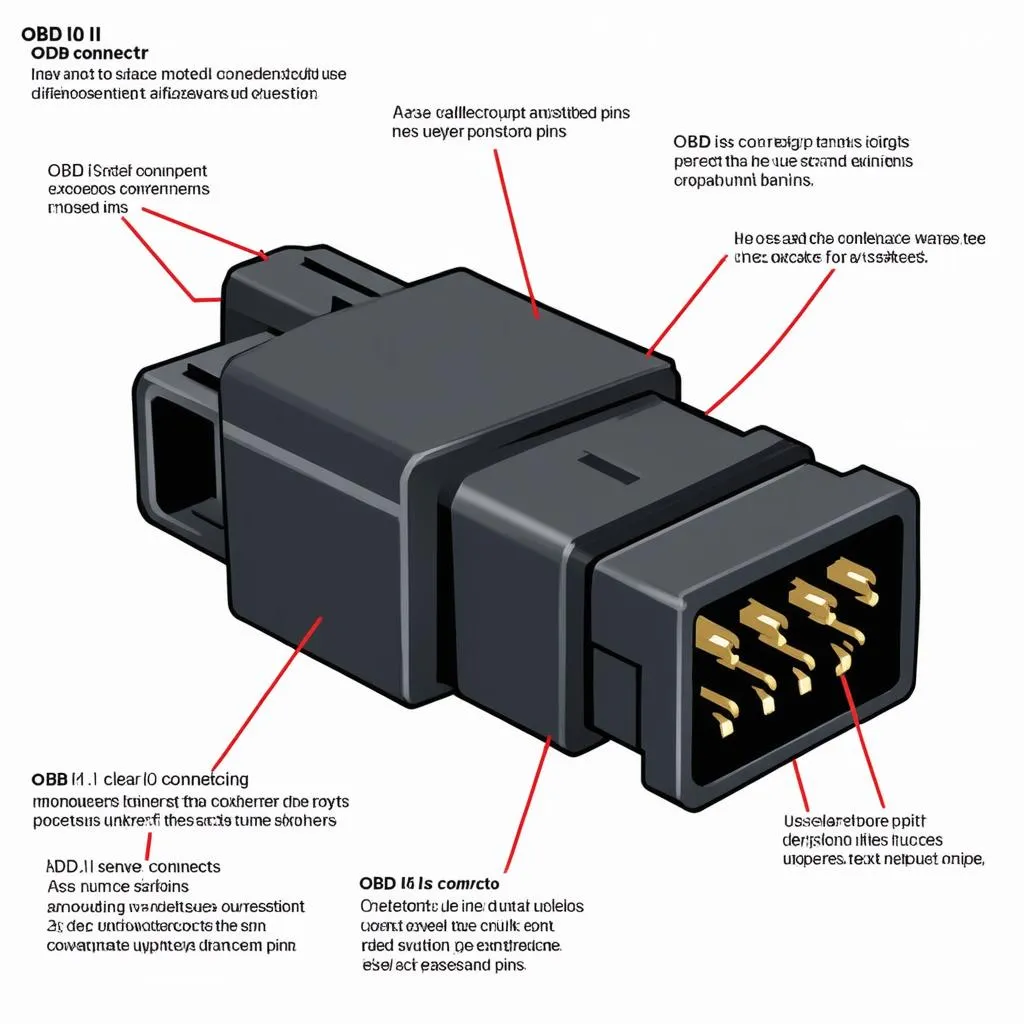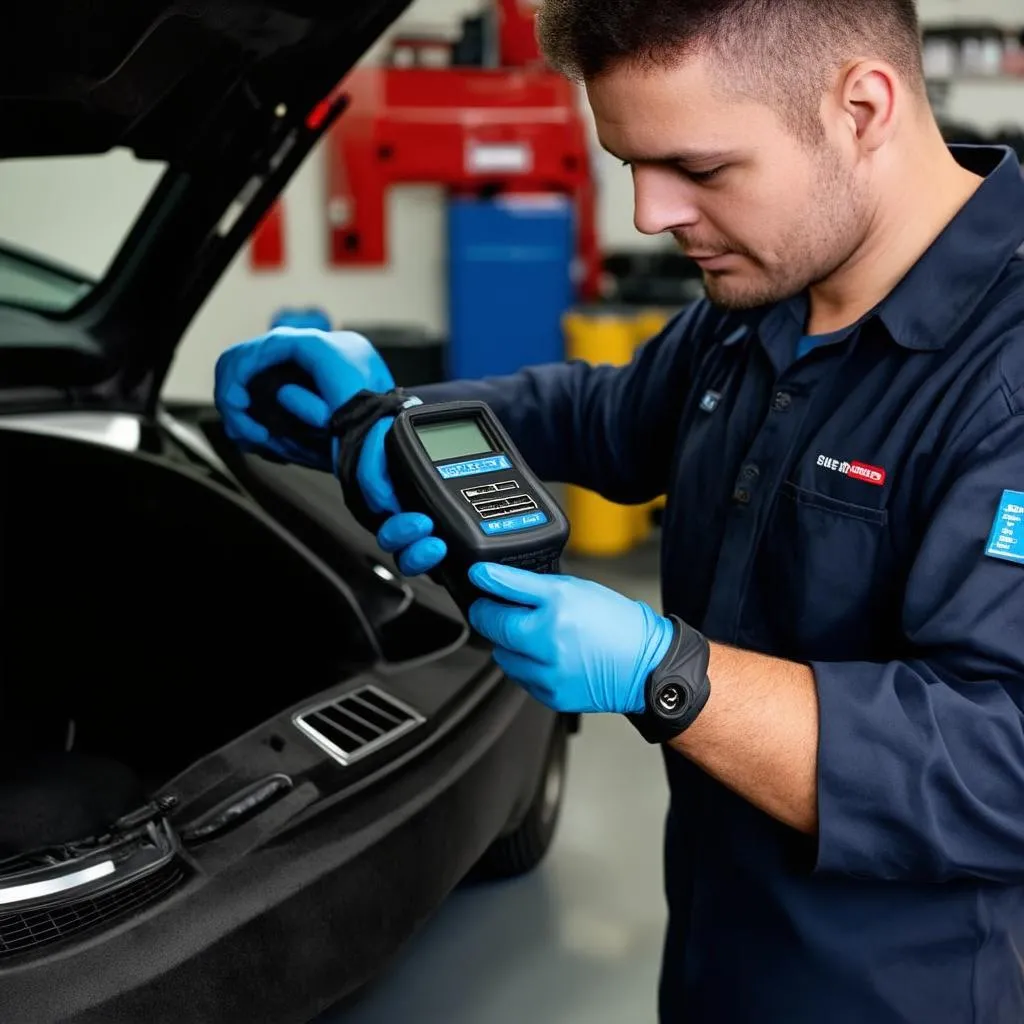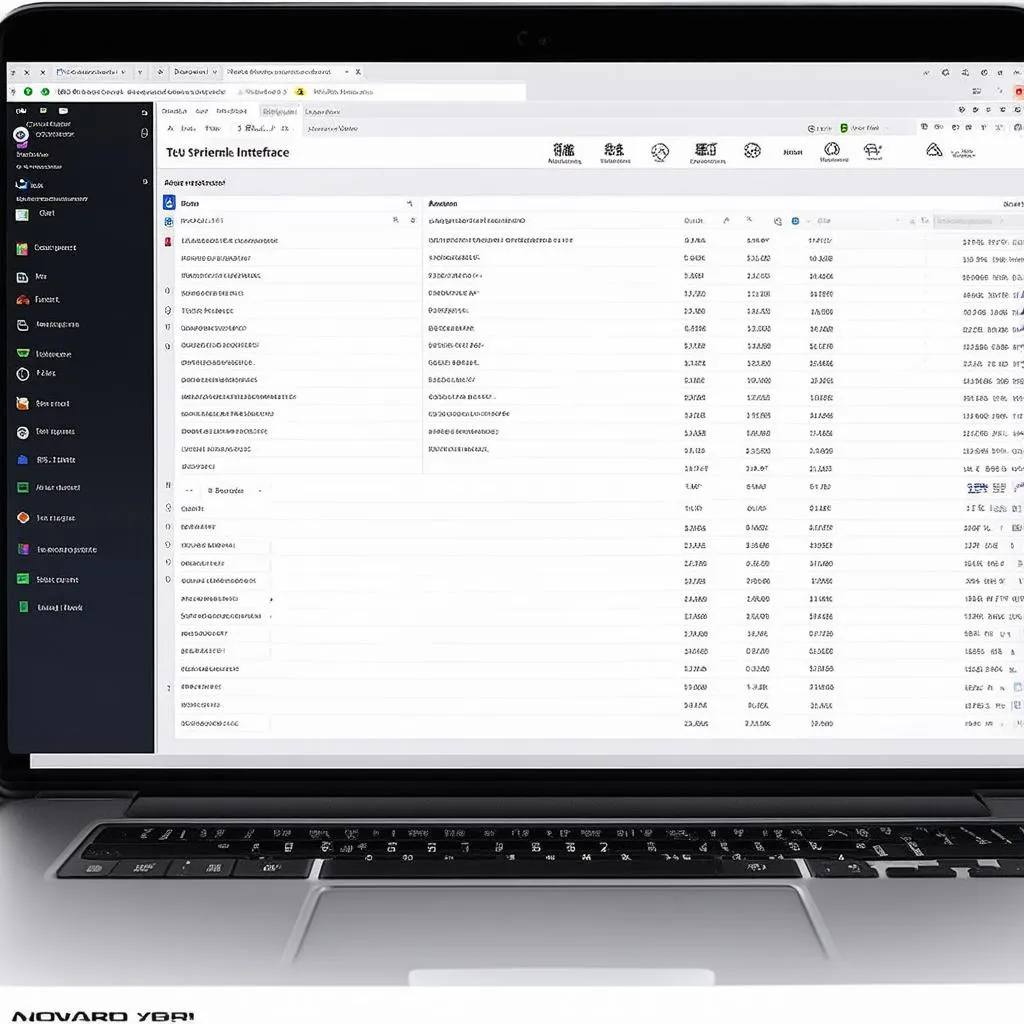Imagine this: you’re driving down the road, and suddenly, your check engine light pops up like an unwelcome guest. Your heart skips a beat. What does it mean? Is your car about to break down? Fear not! Your car is equipped with a secret language, spoken through the OBD connector, and understanding its pin diagram can empower you to decode those cryptic warning lights.
Demystifying the Obd Connector Pin Diagram
What exactly is an Obd Connector Pin Diagram?
The OBD connector, often tucked away under the dashboard on the driver’s side, is your gateway to your car’s computer system. The pin diagram is essentially a roadmap, showing you which pins within that connector correspond to specific data transmissions.
Think of it as a translator between you and your car. Just like each word in a sentence conveys meaning, each pin on the connector transmits specific information about your engine, transmission, emissions system, and more.
Why should you care?
Understanding the Obd Connector Pin Diagram opens up a world of possibilities for car owners and mechanics alike:
- DIY Diagnostics: With a basic OBD-II scanner and the knowledge of the pin diagram, you can diagnose many car problems yourself, saving you time and money on trips to the mechanic.
- Enhanced Repairs: Mechanics rely heavily on the OBD connector and its pin diagram to pinpoint issues accurately and efficiently.
- Performance Tuning: For car enthusiasts, accessing the data stream through specific pins allows for fine-tuning and optimizing performance.
Decoding the Pinout: A Closer Look
While the specific arrangement may vary slightly depending on the car model and year, most OBD-II connectors (found in cars from 1996 onwards in the US) follow a standard layout:
- Pin 2: J1850 Bus+ (Used primarily by Ford vehicles)
- Pin 4: Chassis Ground
- Pin 5: Signal Ground
- Pin 6: CAN High (J-2284)
- Pin 7: ISO 9141-2 K-Line
- Pin 10: J1850 Bus- (Used primarily by GM vehicles)
- Pin 14: CAN Low (J-2284)
- Pin 16: Battery Power
These pins, like specialized channels, carry data related to various systems within your car. For example, if your car throws an engine code related to the oxygen sensor, the corresponding data stream will be transmitted through specific pins, allowing your scanner to pinpoint the issue.
 OBD Connector Diagram
OBD Connector Diagram
Obd Connector Pin Diagram in Action
Real-World Scenarios:
Let’s say your car is experiencing rough idling. Using an OBD-II scanner and referring to the pin diagram, you can tap into the data stream related to your engine’s sensors. This might reveal a faulty Mass Air Flow sensor (MAF), which, once replaced, can resolve your idling issue and restore your car’s smooth performance.
Beyond Diagnostics:
The OBD connector and its pin diagram also play a crucial role in advanced automotive technologies:
- Advanced Driver-Assistance Systems (ADAS): Features like lane departure warning, adaptive cruise control, and automatic emergency braking rely on data transmitted through the OBD connector for calibration and diagnostics.
- Vehicle-to-Everything Communication (V2X): As cars become increasingly connected, the OBD connector and its pin diagram will be pivotal in enabling communication between vehicles and infrastructure.
The Future of OBD:
As automotive technology advances, we can expect to see even more innovative applications utilizing the OBD connector and its pin diagram, further empowering car owners and mechanics.
“The OBD connector is like a window into the soul of your car,” says John Miller, a veteran automotive engineer at Tesla. “Understanding its language opens up a world of possibilities for diagnostics, repairs, and even performance enhancement.”
 Mechanic Using OBD Scanner
Mechanic Using OBD Scanner
Frequently Asked Questions about Obd Connector Pin Diagrams:
Q: Can I damage my car by using an OBD-II scanner?
A: Generally, no. Using a reputable OBD-II scanner poses minimal risk to your car. However, it’s always best to consult your owner’s manual or a qualified mechanic if you have any concerns.
Q: Do all cars use the same OBD connector pin diagram?
A: While most modern cars use the standard OBD-II connector and pinout, there might be slight variations depending on the make, model, and year of your vehicle. Always refer to your owner’s manual or a reliable source for your specific car.
Q: What are some common issues that can be diagnosed using an OBD-II scanner and the pin diagram?
A: A wide range of issues, including engine misfires, oxygen sensor problems, transmission issues, and emissions-related faults, can be diagnosed.
Looking for More Car Tech Insights?
- Discover the secrets behind the OBD port location in a BMW E30: [Link to https://techcarusa.com/bmw-e30-obd-port-location/ ]
- Having trouble finding the OBD plug in your Discovery 2? We’ve got you covered: [Link to https://techcarusa.com/discovery-2-obd-plug/ ]
Need Help Navigating the World of Car Diagnostics?
We’re here to help! Contact us on WhatsApp at +84767531508 for expert assistance with diagnostic tools and car repair support. Our team of automotive specialists is available 24/7 to answer your questions and guide you through any car troubles.
 Car Diagnostic Software
Car Diagnostic Software
Keep Exploring the Fascinating World of Car Tech
Don’t let car troubles leave you stranded. Empower yourself with knowledge! Explore our website, TechCarUSA, for more insightful articles and resources on all things automotive. We’re your trusted source for demystifying car technology and keeping you on the road with confidence.